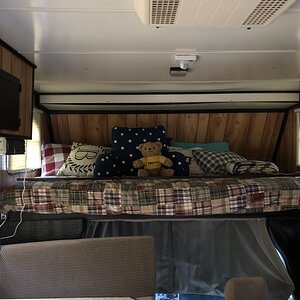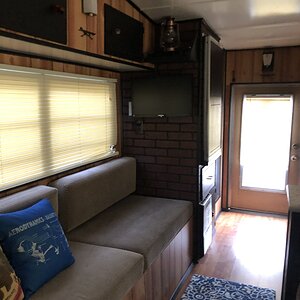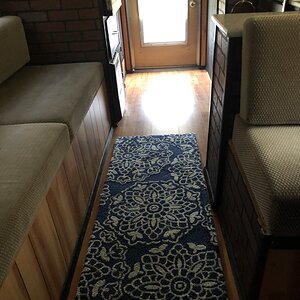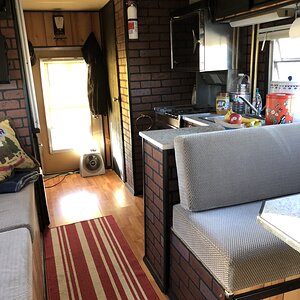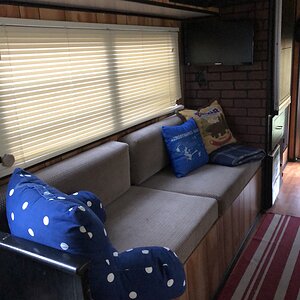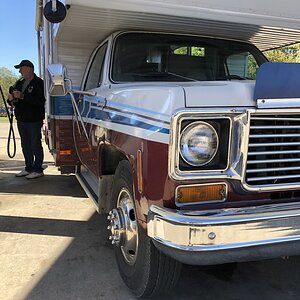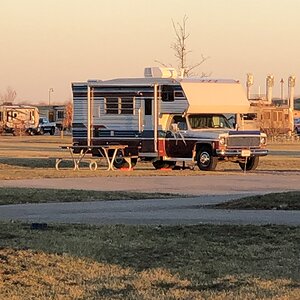flyboy013
RVF VIP
- Joined
- Jul 24, 2020
- Messages
- 384
- Location
- Naples, Florida
- RV Year
- 2018
- RV Make
- Newmar
- RV Model
- Mountain Aire 4531
- RV Length
- 45
- Chassis
- Spartan K3
- Engine
- Cummins ISX12 (500HP)
- TOW/TOAD
- 2023 Jeep GC Summit Reserve
- Fulltimer
- Yes
The charge bridge (bidirectional isolator relay) in my Mountain Aire is control by the Silverleaf TM102 module as opposed to an Intellitec BIRD that I believe is installed in the Dutch Star and below models.
When Silverleaf senses a low chassis battery voltage it engages the charge bridge solenoid (assuming the coach has AC power) so that the chassis battery gets charged too. Silverleaf only activates the charge bridge for 1 hour. I’ve tried changing the Silverleaf configurations but to no avail.
The problem is that 1 hour of charging isn’t long enough to get the chassis battery charged from 12.4 volts (Silverleaf trigger) back up to 12.8+ volts. Thus I would find that my charge bridge would activate several times a day as the voltage on my chassis battery drops.
This becomes more of an issue when I’m boondocking, as the generator would run before quiet time to charge the house batteries. If the chassis battery is at 12.5 volts, the charge bridge would not engage and the chassis batteries aren’t able to take advantage of this limited charging time. By morning (end of quiet time), my chassis batteries are lower than the 12.4 volts that would kick in charging. A few times I have found the chassis batteries below 12.0 volts by morning. (Parasitic power draw is a separate issue that I’ve looked into. That’s for a possible future topic).
So, I decided I would create my own charge bridge controller and install it along side the Silverleaf capability. With a Sonoff SV device (less than $5), I was able to implement a smart switch to charge my chassis batteries at the “right time”. The Sonoff SV is merely a smart relay that is powered by 12 volts. When the relay is turned on, the 12V power is provided as an output which I have connected (along with the Silverleaf output signal) to the White Rodgers solenoid for activation. The Sonoff SV is installed in the cord reel electrical compartment and is connected to one of the many unused fuse slots. I installed Tasmota (open source ESP8266 firmware) and configured it to access my MQTT server (think smart home communications hub).
So now I have many ways that I can enable the charging of my chassis batteries. First off, I have Silverleaf with its logic. I can push the button the Sonoff SV to manually active the charge bridge. I can point my web browser to the Sonoff SV to turn the relay on. Best of all I can have my RV automation controller active the relay / charge bridge.
For the later, I have automations setup such that if the generator gets turned on, a message is sent to the MQTT server to have the charge bridge engaged. When the generator turns off, the charge bridge will turn off. I also have logic such that if the coach looses AC power (ie. unplugged) the charge bridge will turn off to ensure that the house doesn’t draw power from the chassis batteries.
Below is a picture of the install. The red glow is from the Sonoff SV LED showing that the relay is turned on. The case was 3D printed.

Here is a picture of the Tasmota webpage.

When Silverleaf senses a low chassis battery voltage it engages the charge bridge solenoid (assuming the coach has AC power) so that the chassis battery gets charged too. Silverleaf only activates the charge bridge for 1 hour. I’ve tried changing the Silverleaf configurations but to no avail.
The problem is that 1 hour of charging isn’t long enough to get the chassis battery charged from 12.4 volts (Silverleaf trigger) back up to 12.8+ volts. Thus I would find that my charge bridge would activate several times a day as the voltage on my chassis battery drops.
This becomes more of an issue when I’m boondocking, as the generator would run before quiet time to charge the house batteries. If the chassis battery is at 12.5 volts, the charge bridge would not engage and the chassis batteries aren’t able to take advantage of this limited charging time. By morning (end of quiet time), my chassis batteries are lower than the 12.4 volts that would kick in charging. A few times I have found the chassis batteries below 12.0 volts by morning. (Parasitic power draw is a separate issue that I’ve looked into. That’s for a possible future topic).
So, I decided I would create my own charge bridge controller and install it along side the Silverleaf capability. With a Sonoff SV device (less than $5), I was able to implement a smart switch to charge my chassis batteries at the “right time”. The Sonoff SV is merely a smart relay that is powered by 12 volts. When the relay is turned on, the 12V power is provided as an output which I have connected (along with the Silverleaf output signal) to the White Rodgers solenoid for activation. The Sonoff SV is installed in the cord reel electrical compartment and is connected to one of the many unused fuse slots. I installed Tasmota (open source ESP8266 firmware) and configured it to access my MQTT server (think smart home communications hub).
So now I have many ways that I can enable the charging of my chassis batteries. First off, I have Silverleaf with its logic. I can push the button the Sonoff SV to manually active the charge bridge. I can point my web browser to the Sonoff SV to turn the relay on. Best of all I can have my RV automation controller active the relay / charge bridge.
For the later, I have automations setup such that if the generator gets turned on, a message is sent to the MQTT server to have the charge bridge engaged. When the generator turns off, the charge bridge will turn off. I also have logic such that if the coach looses AC power (ie. unplugged) the charge bridge will turn off to ensure that the house doesn’t draw power from the chassis batteries.
Below is a picture of the install. The red glow is from the Sonoff SV LED showing that the relay is turned on. The case was 3D printed.
Here is a picture of the Tasmota webpage.



